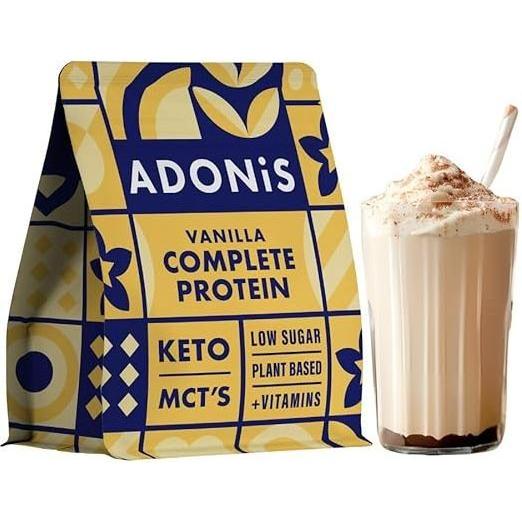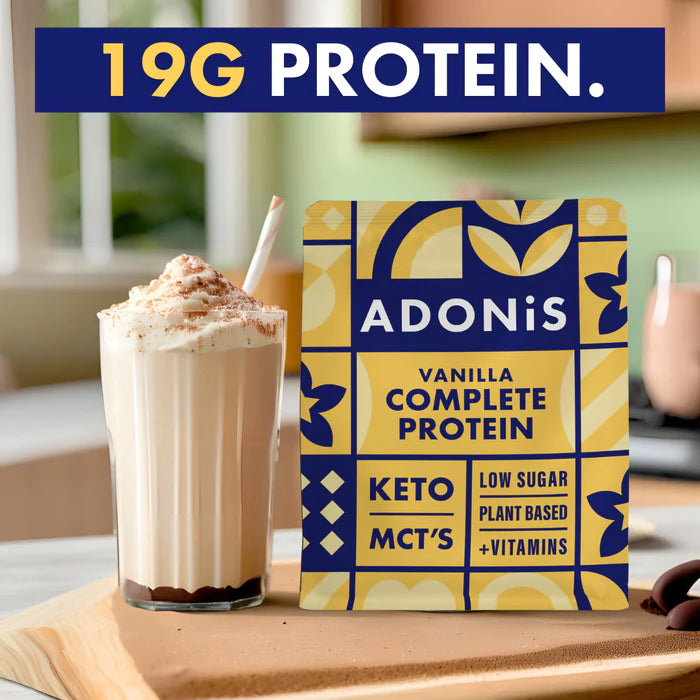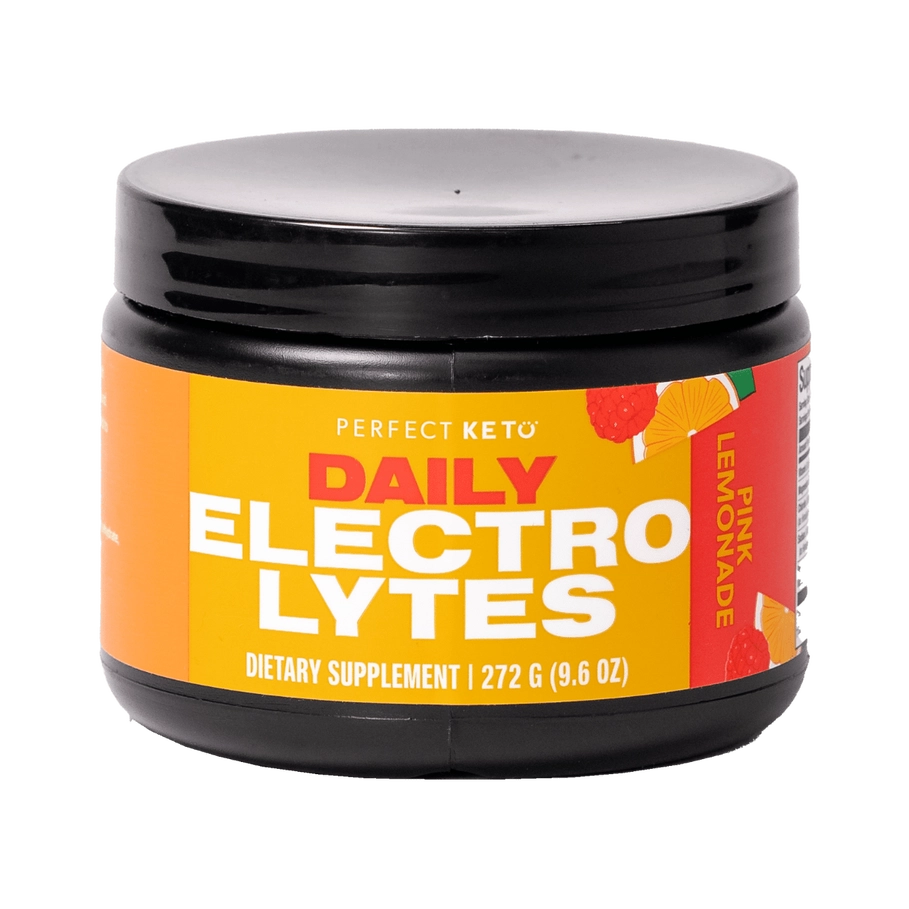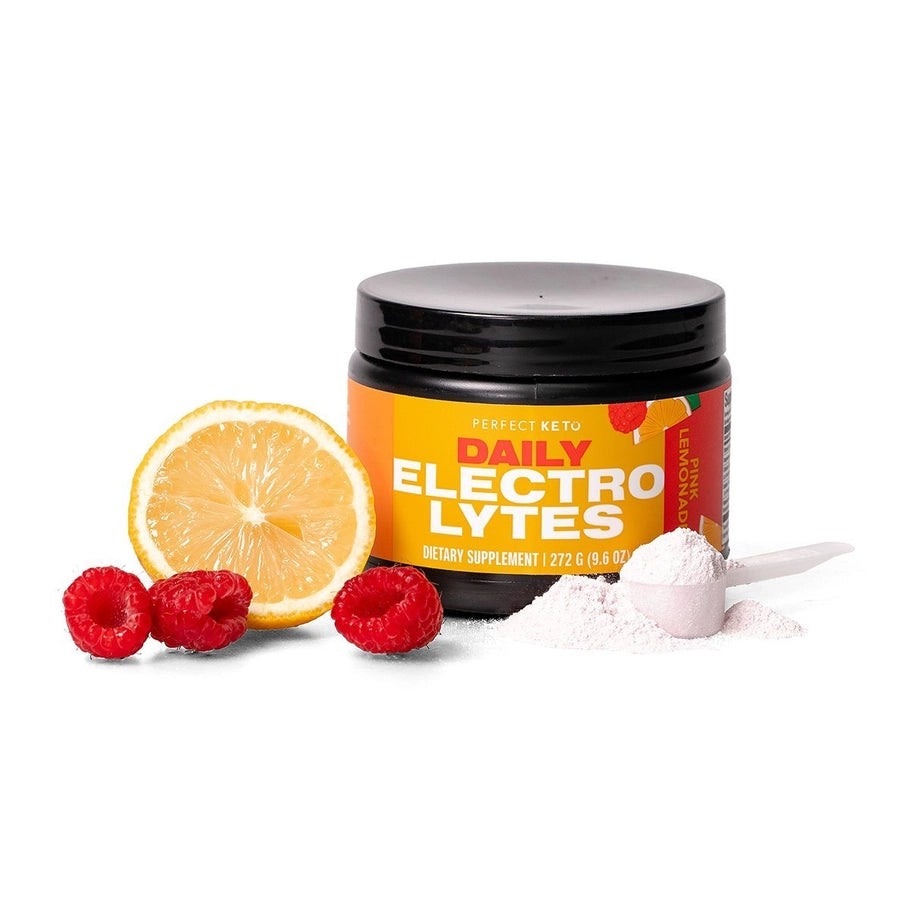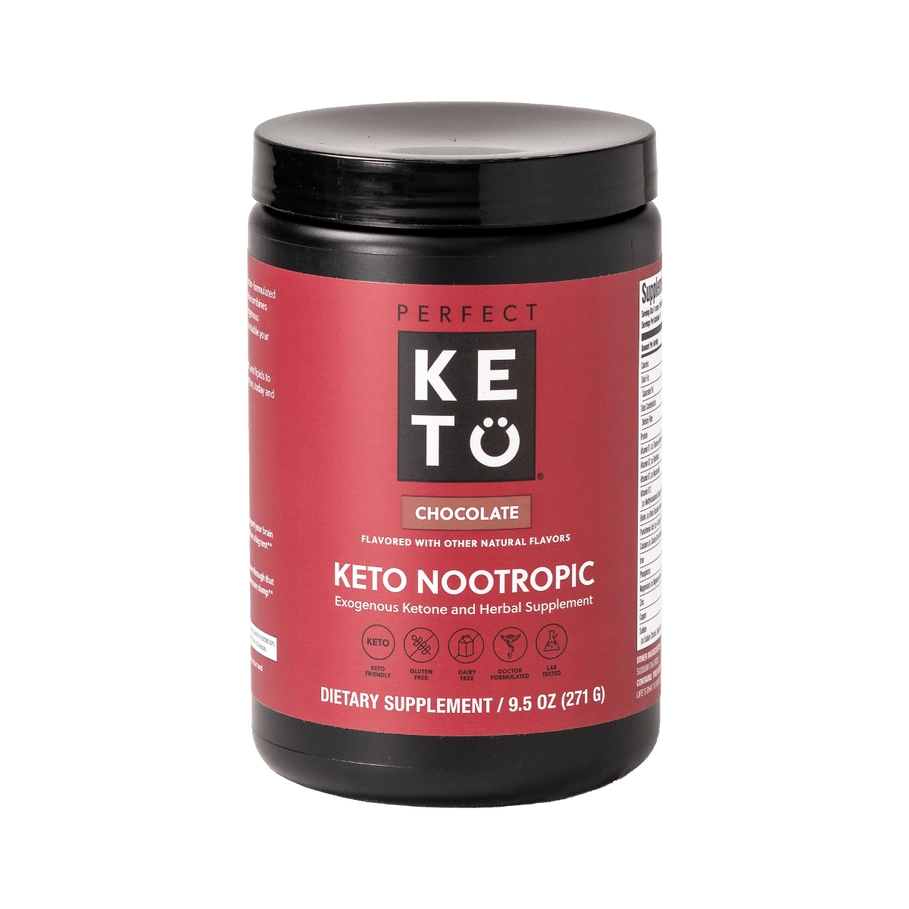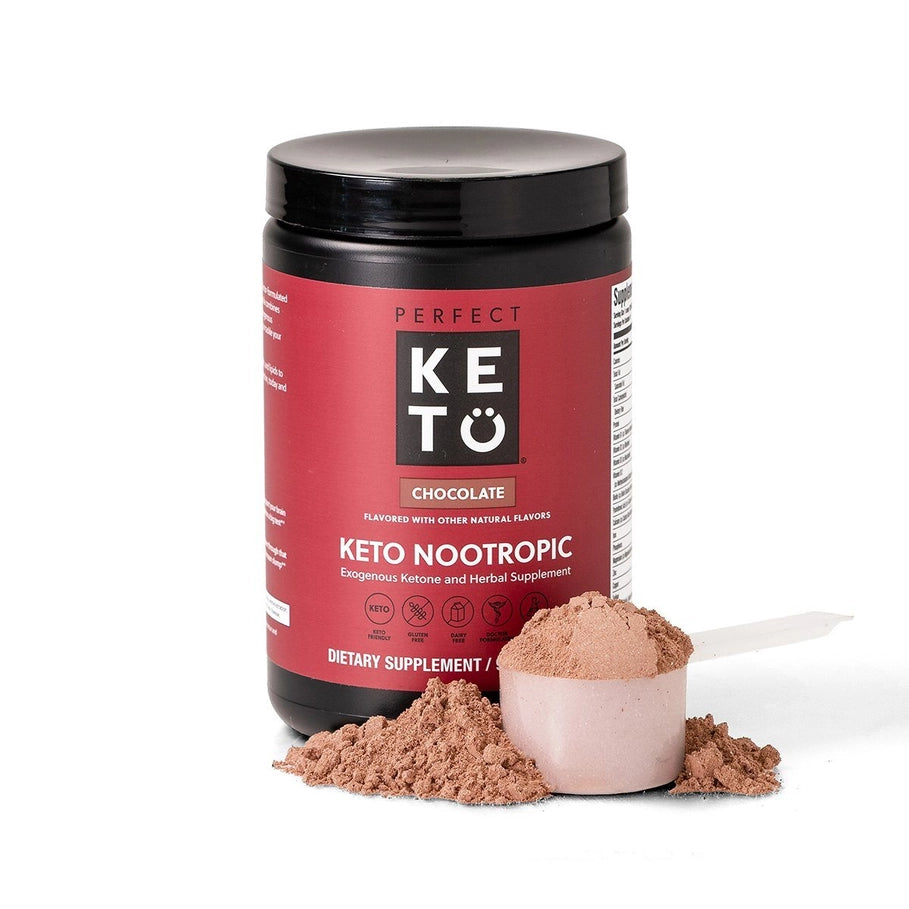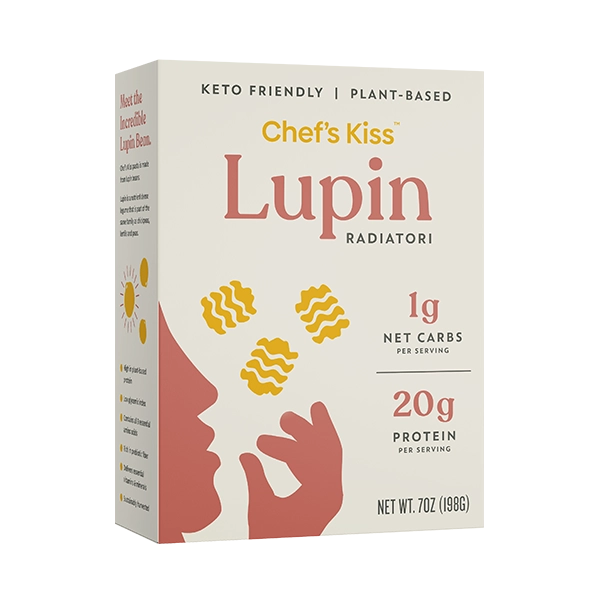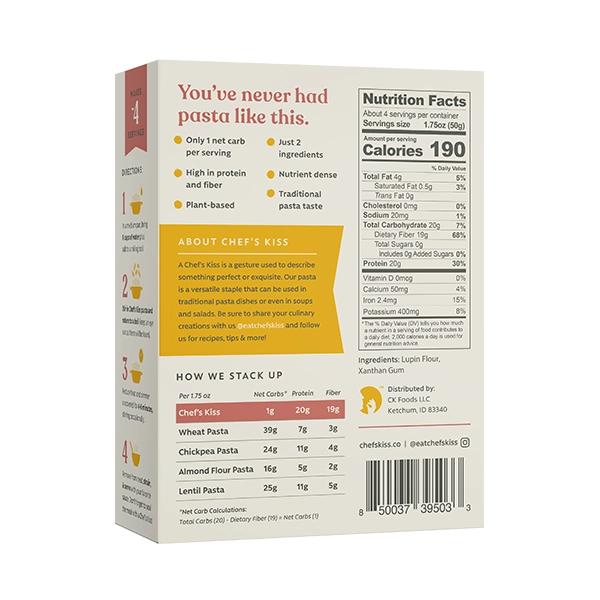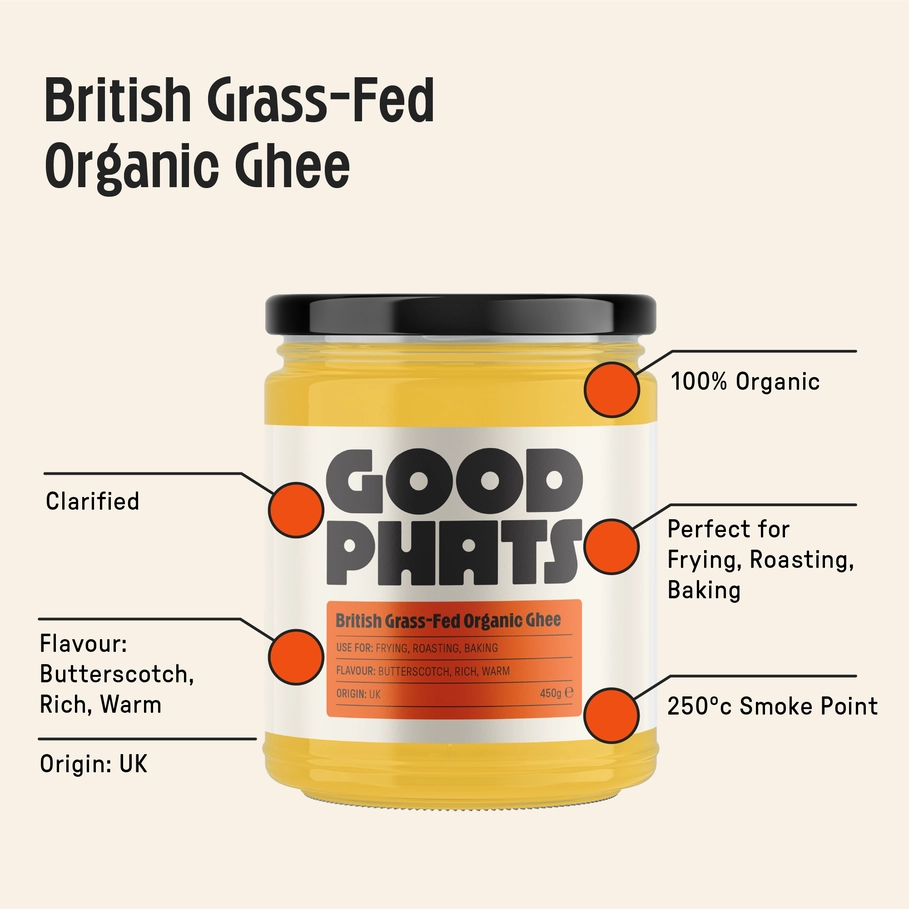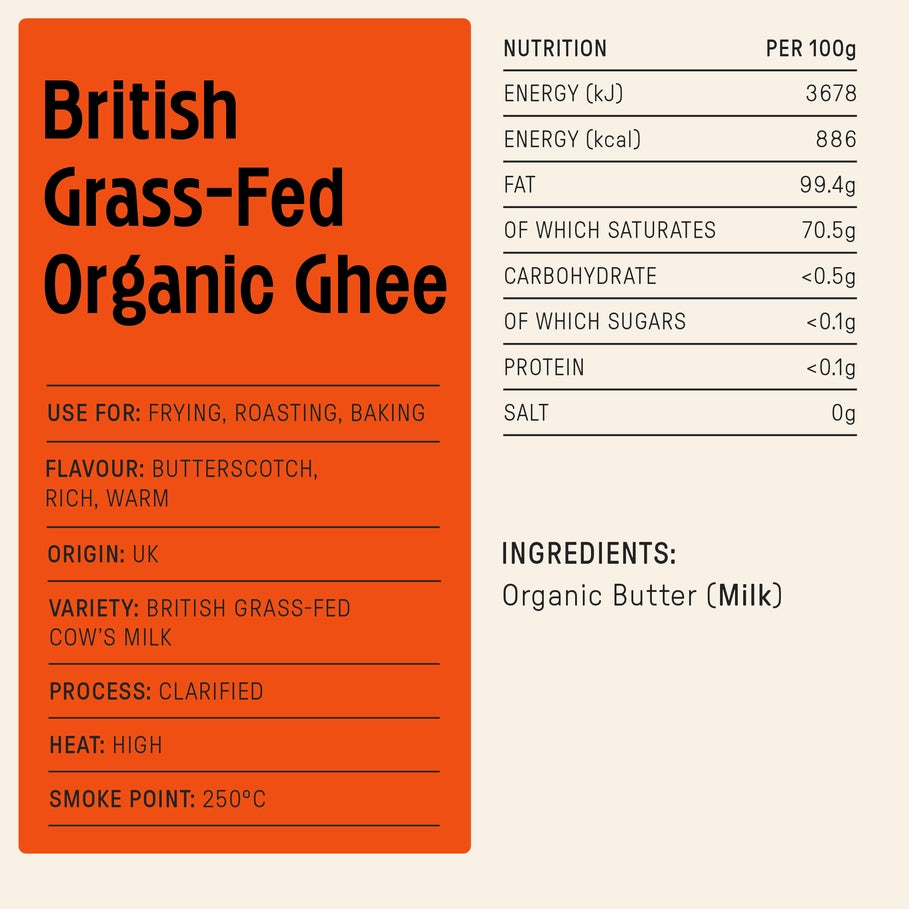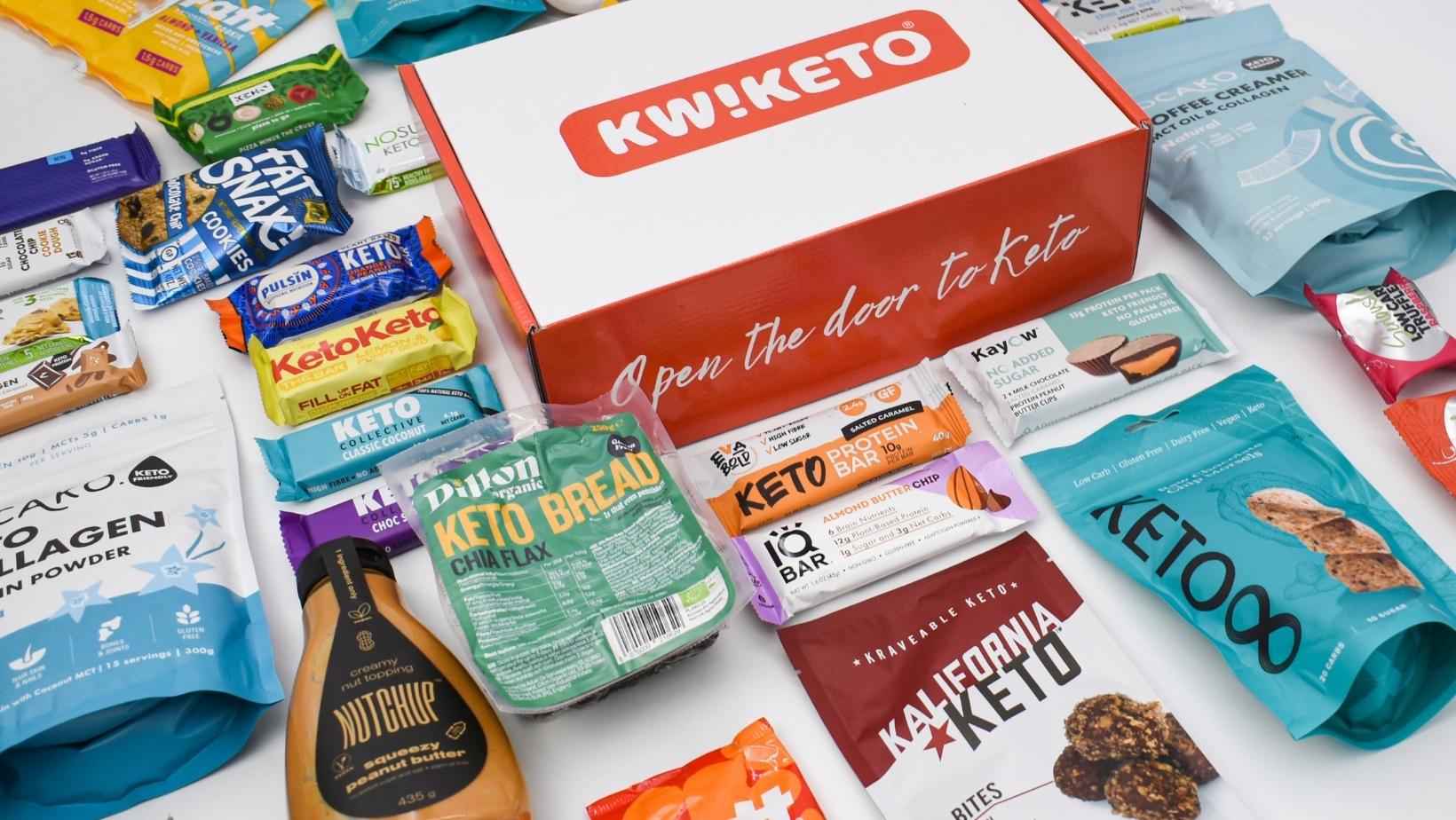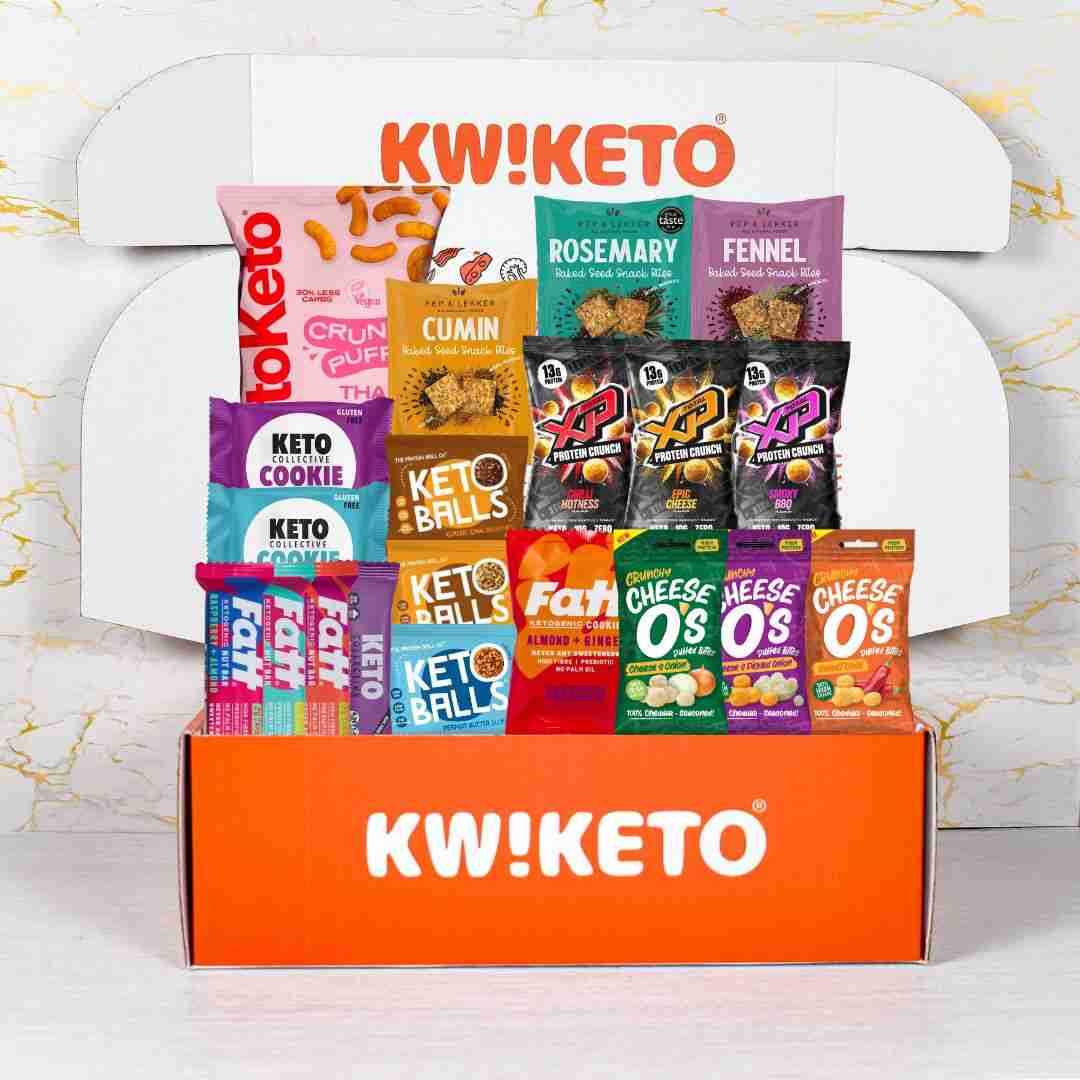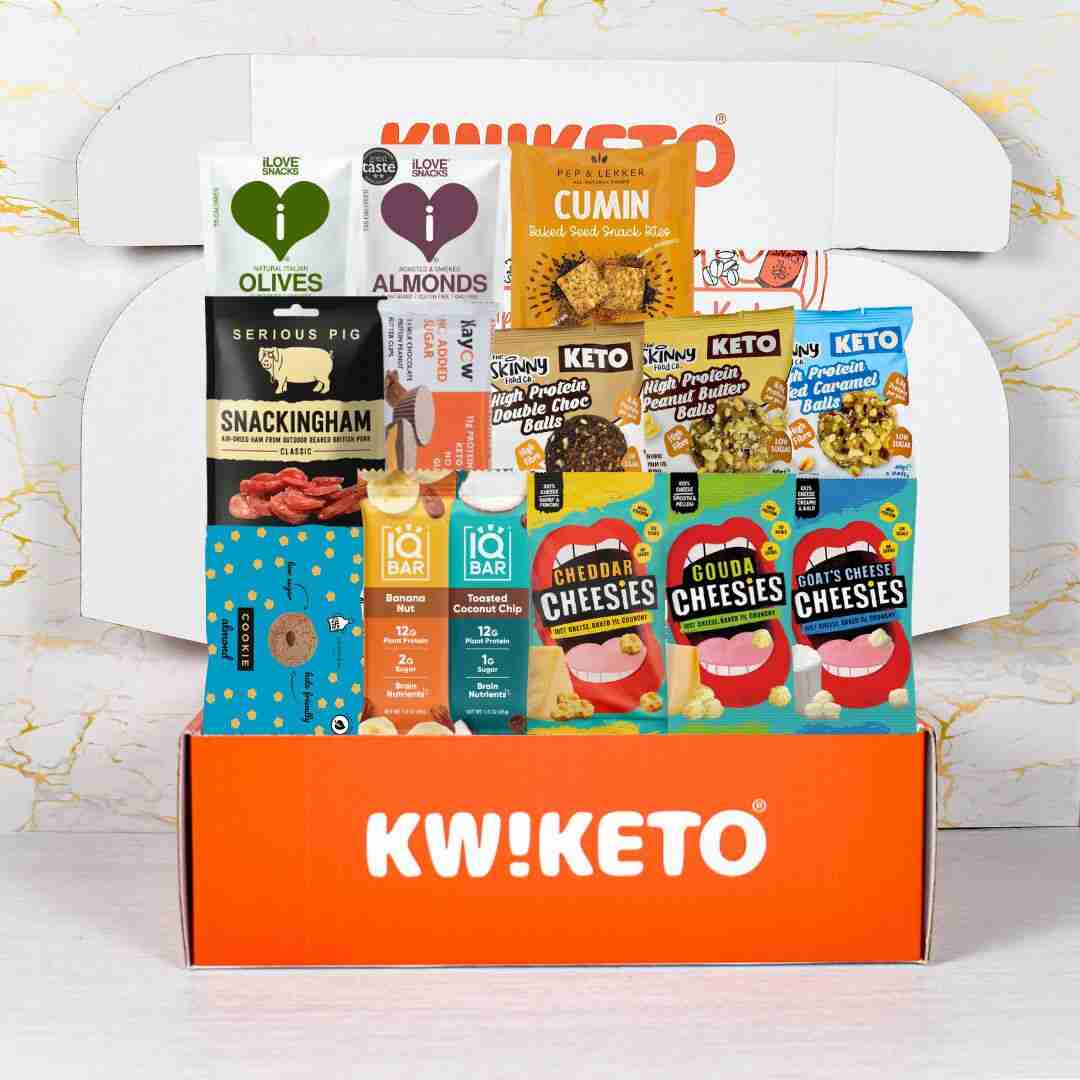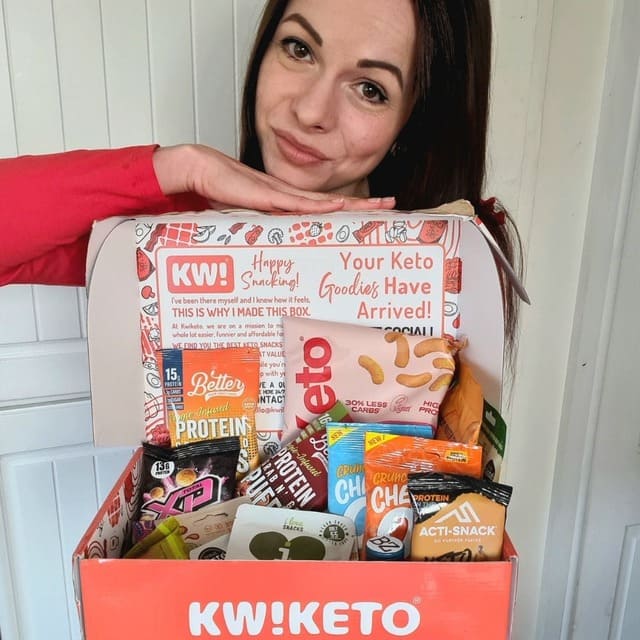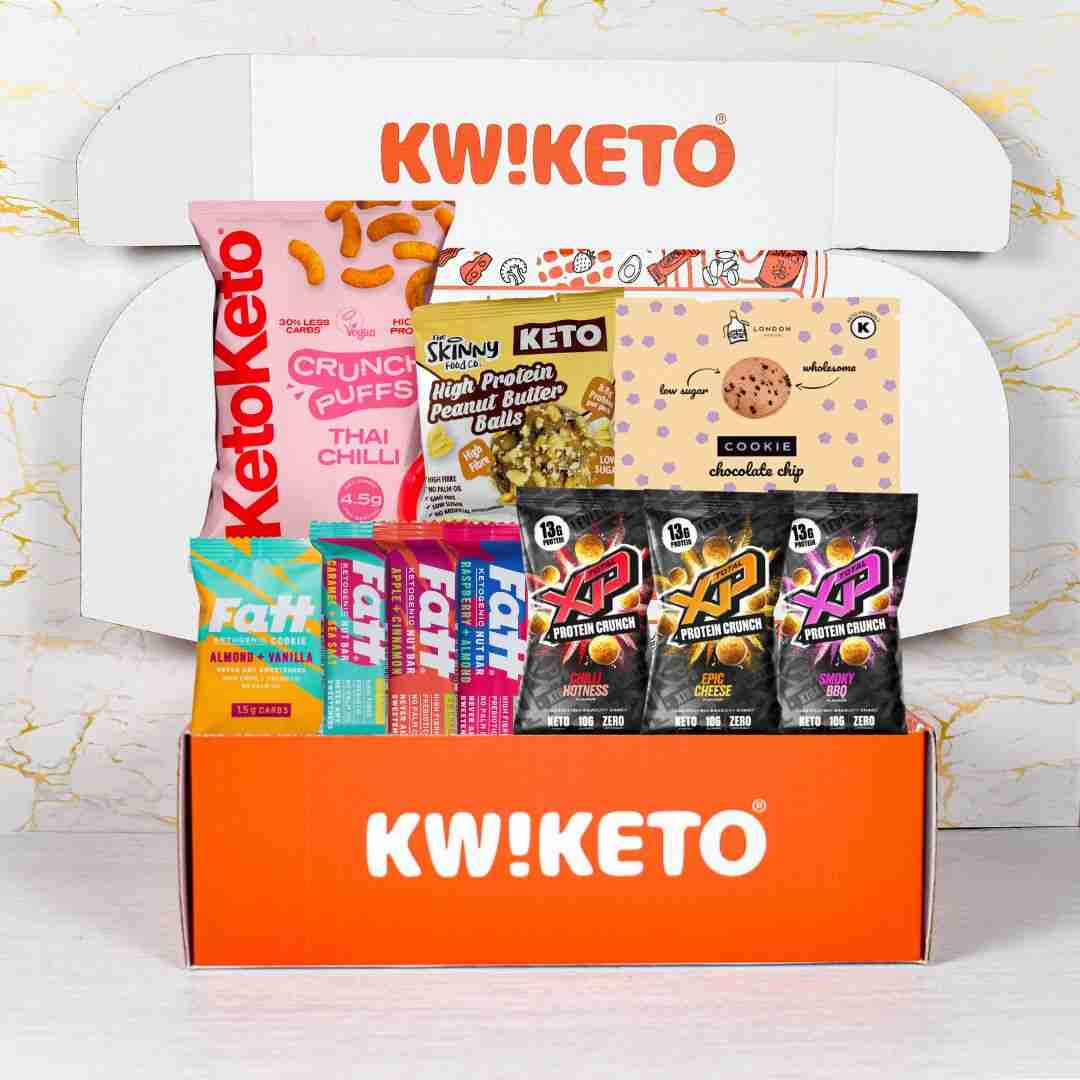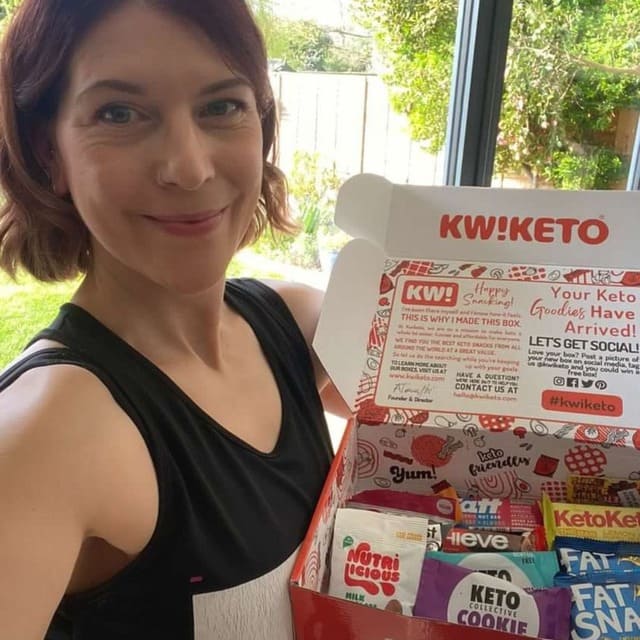
Why Low-Carb Spreads Are a Keto Essential
Keto Spreads Are the Secret Weapon in Your Low-Carb Diet
Low-carb diets can help you lose weight fast. Many people lose up to 12 pounds in their first week. The diet needs careful planning and limits carbohydrate intake to 50-150 grams daily. We found that there was a simple addition that makes this diet easier to follow.
These spreads have become valuable tools for anyone following a high-fat low-carb diet. They help people stay within their recommended carbohydrate ranges. You can still enjoy tasty meals and snacks while making your low-carb experience both satisfying and sustainable.
Check out our premium Keto and Low-Carb Spreads from Kefood in Italy! Made with the finest ingredients, they're low in carbs, sugar-free, and crafted for the ultimate taste experience.
Understanding Low-Carb Spreads in Keto Foods
Keto and low-carb spreads are gaining popularity among people who follow a low-carb diet. You need to know what sugar-free really means to make smart choices.
What qualifies as sugar-free
Products with a keto label must have less than 6 of sugars per 100g or 100ml [1]. These products should not contain added mono- or disaccharides or other sweetening ingredients [1]. Some products might show a 'no added sugar' label instead. This means they don't have extra sugars beyond what's naturally in the ingredients [2].
Common types of sugar-free spreads
The market has several low-carb spread options that fit a high-fat low carb diet:
-
Nut-based spreads: Hazelnut chocolate spreads containing 13% hazelnuts [3]
-
Dairy-based alternatives: Products with skimmed milk powder and whey powder
-
Plant-based options: Spreads made with green palm oil and coconut oil [4]
Reading nutrition labels effectively
Reading nutrition labels helps you find the right keto products for a low-sugar low-carb diet. The 'of which sugars' figure in the carbohydrate section of nutrition labels tells the real story [5]. Watch out for natural sweeteners like maltitol, erythritol, and stevia.
Hidden sugars can sneak into ingredient lists under different names. Look for honey, syrup, nectar, molasses, or words ending in 'ose' like fructose, glucose, dextrose, and maltose [7]. The ingredient list shows items by weight order. Sugar near the top means the product has more of it [2].
These products should have no more than 6g of sugar per 100g for solids or 3 of sugar per 100ml for liquids [1]. Many brands now show key nutritional info on the front using colours - green means low, amber means medium, and red means high amounts [7].
Serving sizes matter when comparing products. Some brands list nutrition per portion while others show it per 100g [7]. This can affect your daily carb intake on a low-carb high-fat diet.
Top Low-Sugar Spread Options for Low-Carb Dieters
These spreads can make a low-carb diet enjoyable and help you stick to green practices. Let's look at the best options that line up with your diet goals.
Nut and seed-based spreads
Nut-based spreads are great protein-rich alternatives for low-carb foods. Hazelnut-based options with 13% hazelnuts [8] give you that perfect mix of taste and nutrition. These products usually have less than 6 of sugar per 100g [8], which makes them perfect for a low-sugar low-carb diet.
Mergulo's Cashew Nut-But*er stands out because it doesn't have artificial preservatives. Sunflower-based options like Biona's Organic Sunflower Spread work great and don't contain trans fats.
Dairy-based alternatives
Dairy-based spreads pack lots of nutritional benefits, especially when you have a high-fat low-carb diet. Unsweetened calcium-fortified options give you plenty of protein and calcium [10]. We used these spreads because they have healthy fats with zero net carbs [11].
Kerrygold's spreadable butter, including their Irish Butter with Olive Oil, packs 11g of healthy fats in each 14g serving [11]. Despite that, people sensitive to lactose can find many lactose-free options with the same vitamins and minerals as regular dairy products [10].
Plant-based options
Plant-based spreads now match low carb high-fat diet needs perfectly. Modern varieties use palm oil and coconut oil bases [8]. Earth Balance's pressed oil spreads give you 10g of fats per 10g serving with zero net carbs [11].
Miyoko's Cultured Vegan Butter offers an organic choice with 11g of fats per 14g serving [11]. These alternatives work great for anyone who wants dairy-free options while sticking to their low-carb lifestyle.
Your spreads will last longer in a cool, dry place. Most varieties stay fresh for up to 3 months after opening [8]. You should keep some products in the fridge, especially dairy-based ones, to maintain their texture and prevent spoilage.
Incorporating Low-Carb Spreads Into Your Keto & Low-Carb Diet Foods
These spreads make it easy to turn everyday meals into tasty low-carb options. You can use these versatile ingredients in many creative ways throughout your day.
Breakfast ideas and applications
A protein-rich breakfast sets you up for success on a low-carb diet. These spreads add extra flavour to your low-carb English breakfast [12]. We used dairy-based alternatives to make scrambled eggs more satisfying [12].
Your morning gets a boost with a low-carb yoghurt breakfast bowl that includes nut-based spreads [12]. Cheesy egg muffins work great as a grab-and-go option you can prepare ahead [12]. Your breakfast becomes complete with mushroom stacks and your favourite sugar-free spread drizzled on top [12].
Lunch and dinner uses
Low-sugar spreads can raise main courses to new heights. Traditional recipes often need carb-heavy ingredients, but these spreads give you tasty alternatives for your low-carb diet foods. Peanut butter chicken curry shows how a nut-based spread creates a rich, satisfying sauce [5].
Spreads work great in salad dressings for lighter meals. Avocado-based alternatives add depth to chicken, broccoli, and beetroot salad [5]. These spreads help turn simple proteins into memorable meals, as shown in ginger and soy salmon dishes [5].
Snack combinations
Smart snacking helps you stick to a high-fat low-carb diet. Here are protein-rich combinations with sugar-free spreads:
-
Veggie sticks paired with nut butter or hummus [2]
-
Brown rice cakes topped with avocado spread [2]
-
Boiled eggs with sugar-free spreads [2]
Of course, nuts and seeds make great snack bases that give you healthy fats and fibre [13]. These spread-based snacks help people manage blood sugar levels with sustained energy that fits a low-sugar low-carb diet [13].
A quick peanut butter mousse needs just four ingredients and has only 5g net carbs per serving [14]. This treat helps satisfy your sweet cravings while you stay on track with your diet goals.
Shopping Guide for Keto Spreads
Smart shopping knowledge helps you navigate these spread market while sticking to your low-carb diet. These speciality products are now accessible to more people than ever, thanks to many retailers that arrange their products to match your dietary needs.
Where to find speciality products
Health food stores in major cities stock plenty of these type of spreads. You'll find specialized low-carb diet foods in Birmingham, Brighton, London, Manchester, and Plymouth. These stores stock brands like JimJams and Diablo that contain 83% less sugar than regular spreads.
Online marketplaces have grown their sugar-free selections impressively. We now have sections dedicated to sugar-free and low-sugar spreads [4]. People who follow a high-fat low-carb diet will find complete collections of spreads on our website.
Price comparison strategies
Your budget goes further when you understand price differences while maintaining a low-sugar low-carb diet. A 350g jar of low-sugar hazelnut spread costs between £2.50 and £8. The free FoodSwitch UK app makes shared shopping comparisons easy by showing nutritional information and healthier options right away [16].
These tools help you compare prices:
-
Food Switch UK app scans barcodes and suggests alternatives
-
Online price comparison websites
-
Store loyalty programs with special offers
-
Seasonal sale tracking
Bulk buying tips
Bulk purchases can save you money on your low carb high-fat diet. Low-Carb spreads stay fresh for 2-3 months after opening [17]. Storage becomes vital for bulk purchases. Keep unopened jars in a cool, dry place and don't refrigerate unless the label says so [18].
These factors matter for bulk shopping:
-
Look at expiration dates
-
Keep an eye on storage conditions
-
Work out the price per 100g to compare the real value
-
Look for multi-buy deals
Product shelf life varies. Fruit spreads last 2-3 months once opened [17], and nut-based alternatives stay good just as long with proper storage [18]. Some shops give discounts on cases of 12 or more [19]. This works well for dedicated low-carb dieters.
Read nutrition labels carefully before buying in bulk. Products certified as sugar-free should contain less than 0.5g of sugar per serving [20]. Comparing nutritional information helps your purchases match your low-carb diet needs while getting the best value.
Creative Recipe Ideas Using Low-Carb Spreads
Becoming skilled at making these spread recipes creates exciting ways to stick to a low-carb diet. These versatile ingredients can turn ordinary dishes into amazing meals, from quick bites to creative desserts.
Quick low-carb snacks
These spreads can turn simple snacks into tasty treats. You can mix low-carb hazelnut spread with fresh strawberries to make a delicious dip with just 5g net carbs per serving [7]. We used keto-friendly options like chocolate hazelnut spread, which tastes great on almond flour muffins or as thumbprint cookie filling [7].
Tahini-based treats are a protein-rich option that packs excellent nutritional value. Low-sugar halvah cups made with tahini and cocoa butter make a satisfying snack that fits both gluten-free and paleo diets [21]. You can make these treats ahead and keep them in the fridge for busy days.
Main dish applications
Low-carb spreads shine in flavorful main courses. Nut-based spreads work great in Asian-inspired dishes, and dairy-based alternatives create creamy sauces for vegetables and proteins [22].
Here are creative ways to use spreads in main dishes:
-
Sweet potato and bean enchiladas with nut-based spread [22]
-
Mushroom and tofu stir-fry with sesame-based sauce [22]
-
Protein-rich cabbage soup using almond spread base [22]
Dessert alternatives
These spreads excel at creating rich desserts that fit your low-carb diet. Keto brownies made with nut butter and cocoa give you that perfect fudgy texture [23]. Low-carb carrot cake with natural xylitol shows how classic favourites can take on a new life [23].
These spreads work great in frozen treats too. The chocolate hazelnut spread makes an amazing ice cream topping or filling for no-bake bars [7]. You can make peanut butter balls using a low-carb spread with just six ingredients and only 4g total carbs per serving [24].
These spread-based cheesecake satisfies those traditional dessert cravings. Mix cream cheese with sugar-free hazelnut spread for a rich base, then add fresh berries on top for extra flavour [25]. The dessert stays creamy and fits perfectly into a low-sugar low-carb diet.
Breakfast-inspired desserts offer another creative outlet. Low-carb spread-filled croissants paired with chopped bananas make a delightful treat [1]. S'mores-inspired baked crumpets topped with Low-Sugar toffee spread give classic comfort food a unique twist [1].
These recipes show how these healthy spreads can change your approach to a high-fat low-carb diet. Using these versatile ingredients in different dishes proves that a low-carb lifestyle can be full of flavour and variety.
Storage and Shelf Life Tips
These type of spreads need proper storage to stay fresh and safe for your low-carb diet. You should know the best ways to store them.
Proper storage methods
These products stay fresh when you keep them in a cool, dry place away from sunlight [26]. You can store unopened jars at room temperature between 50-70°F (10-21°C) [27]. The refrigerator shelves work better than the door because temperatures stay more stable there [3].
Dairy-based alternatives that fit your high fat low carb diet need refrigeration once opened. These products will stay good for 6-12 months in a sealed container [27]. Make sure to keep the lids tight to prevent contamination and keep them fresh.
Chocolate-based low-sugar spreads need special care - don't refrigerate them or they'll crystallize [28]. These spreads last up to 13 months unopened. Once you open them, they'll stay good for 3 months in your cupboard [28].
Signs of spoilage
Your low-carb foods need to be safe. Look out for these warning signs:
-
Changes in texture or consistency
-
Unusual odours, especially sour or rancid smells
-
Separation of ingredients
-
Mold growth (white fuzzy patches)
-
Darkening or discoloration
-
Bubbling or fermentation in low-sugar products [3]
Liquid forming on top is often the first warning sign [29]. If you spot any mould, throw out the whole jar because mould grows faster in soft foods, even if you can't see it everywhere [29].
Extending product life
People who follow a low sugar low carb diet need their spreads to last longer. Clean utensils are a great way to prevent contamination [27]. This simple habit will substantially extend shelf life and keep your spreads safe.
Temperature control is vital for preservation. Opened jars should stay at 40°F (4°C) or below to stop bacteria from growing [27]. Low-carb spreads with artificial sweeteners last up to a year in the freezer [30].
Homemade low-carb spreads that support your low carb high-fat diet will last longer with a teaspoon of lemon juice. This trick extends fridge life from one week to 3-4 weeks [31]. The acid stops bacteria and keeps quality intact [31].
Vacuum sealing is another great preservation method [26]. Less air exposure means fresher spreads for longer. On top of that, using older products first helps minimize waste and keeps your low-carb diet foods fresh.
Gelatin-based low-carb spreads need to stay in the fridge and you should eat them within 4 weeks [32]. These products work great for a low-carb diet but don't last as long because of their ingredients [33].
Conclusion
These type of spreads are perfect companions for anyone who follows a low-carb lifestyle. These versatile products can enhance breakfast options and create delicious desserts while helping you stick to dietary goals. Smart selection and proper storage will help you get the most value from these kitchen essentials.
Your choice of low-carb spreads can reshape your low-carb experience. Label reading helps avoid hidden sugars. You can keep spreads fresh longer by understanding storage needs. Buying in bulk and using price comparison tools makes these healthy alternatives easier on your wallet.
Different spread varieties make everyday meal preparation simple and exciting. Nut-based options work great for protein-rich snacks, while dairy alternatives create amazing creamy sauces. These products have earned their place as kitchen staples. Sugar-free spreads let you stay true to low-carb goals without giving up taste or variety in daily meals.
FAQs
Q1. Are these spreads suitable for a low-carb diet? These spreads can be excellent additions to a low-carb diet. They typically contain fewer carbohydrates than regular spreads and can help satisfy cravings without compromising your dietary goals. However, it's important to check the nutritional information and ingredients list to ensure they align with your specific low-carb requirements.
Q2. How do I choose the best low-carb spread for my low-carb lifestyle? When selecting this type of spread, look for options with minimal net carbs per serving. Read nutrition labels carefully, paying attention to the 'of which sugars' figure in the carbohydrate section. Choose spreads made with natural sweeteners like stevia or erythritol, and avoid those with hidden sugars or high-carb ingredients.
Q3. Can I use these products in cooking and baking while on a low-carb diet? Absolutely! These spreads are versatile ingredients that can be incorporated into various low-carb recipes. They work well in both savoury and sweet dishes, from enhancing sauces for main courses to creating delicious dessert alternatives. Experiment with different types of spreads to add flavour and texture to your low-carb meals.
Q4. How should I store low-carb spreads to maintain their quality? Most of these products can be stored in a cool, dry place away from direct sunlight. Once opened, some varieties may require refrigeration, especially dairy-based alternatives. Always check the product label for specific storage instructions. Proper storage helps maintain freshness and extends the shelf life of your spreads.
Q5. Are there any creative ways to use these spreads in my low-carb diet? There are numerous creative applications for these products in a low-carb diet. Use them as dips for vegetable sticks, spread them on low-carb crackers or bread alternatives, incorporate them into smoothies for added creaminess, or use them as a base for salad dressings. You can also use them to create low-carb desserts like no-bake cheesecakes or protein balls.
References
[1] - alldayidreamaboutfood.com
[2] - nataliebrady.co.nz
[3] - marthastewart.com
[4] - kwiketo.com
[5] - bbcgoodfood.com
[7] - sugarfreelondoner.com
[8] - hollandandbarrett.com
[10] - nhs.uk
[11] - sureketo.com
[12] - cheapskatecook.com
[13] - diabetes.org.uk
[14] - sugarfreemom.com
[16] - actiononsugar.org
[17] - spamellab.com
[18] - sainsburys.co.uk
[19] - crossoguepreserves.com
[20] - diabeticdiet.pro
[21] - meatfreeketo.com
[22] - eatingwell.com
[23] - bbcgoodfood.com
[24] - sugarfreemom.com
[25] - wholesomeyum.com
[26] - acmsf.food.gov.uk
[27] - preservemania.com
[28] - jimjams-spreads.co.uk
[29] - eatbydate.com
[30] - extension.usu.edu
[31] - sugarfreelondoner.com
[32] - ndsu.edu
[33] - extension.oregonstate.edu

